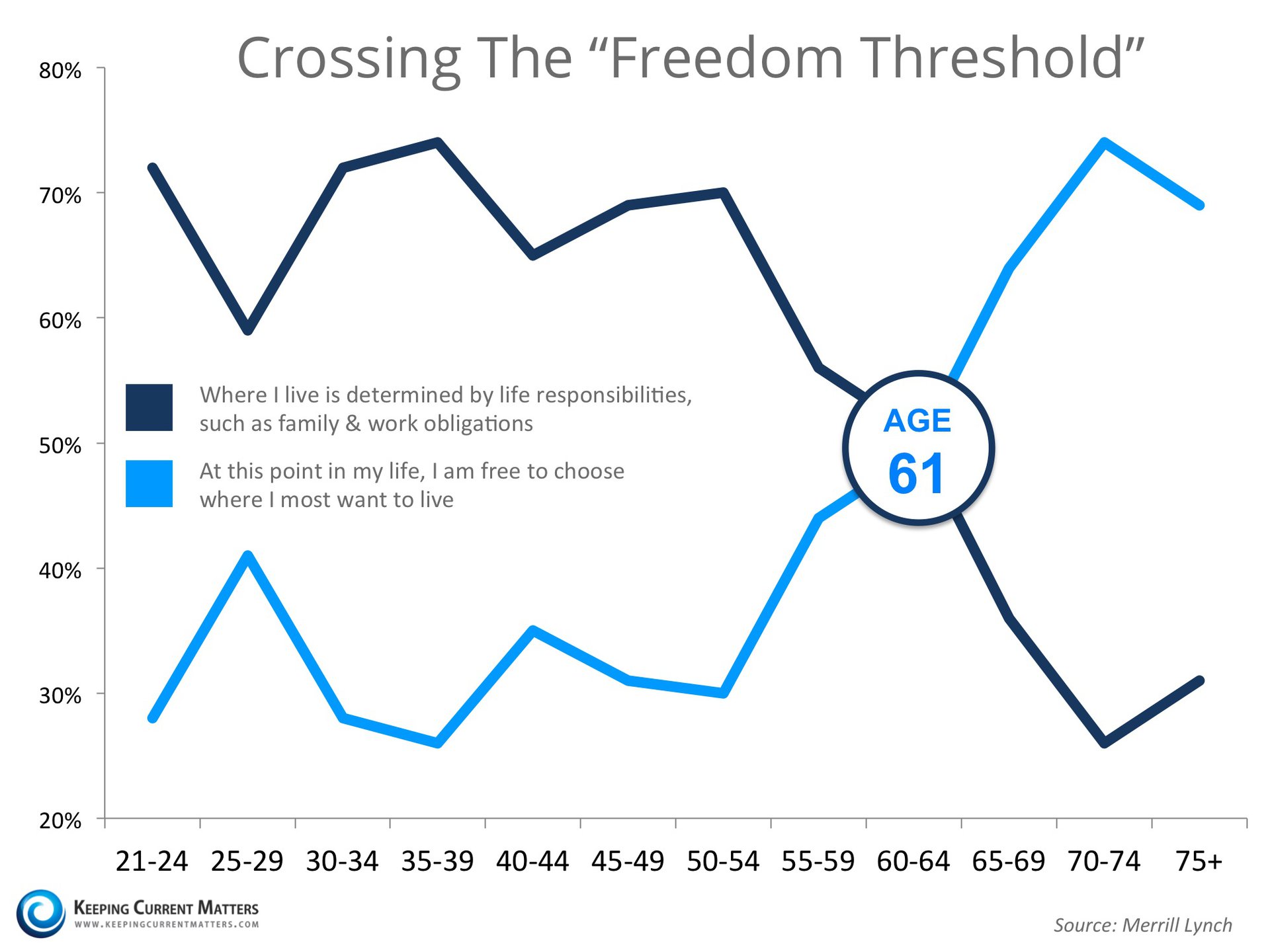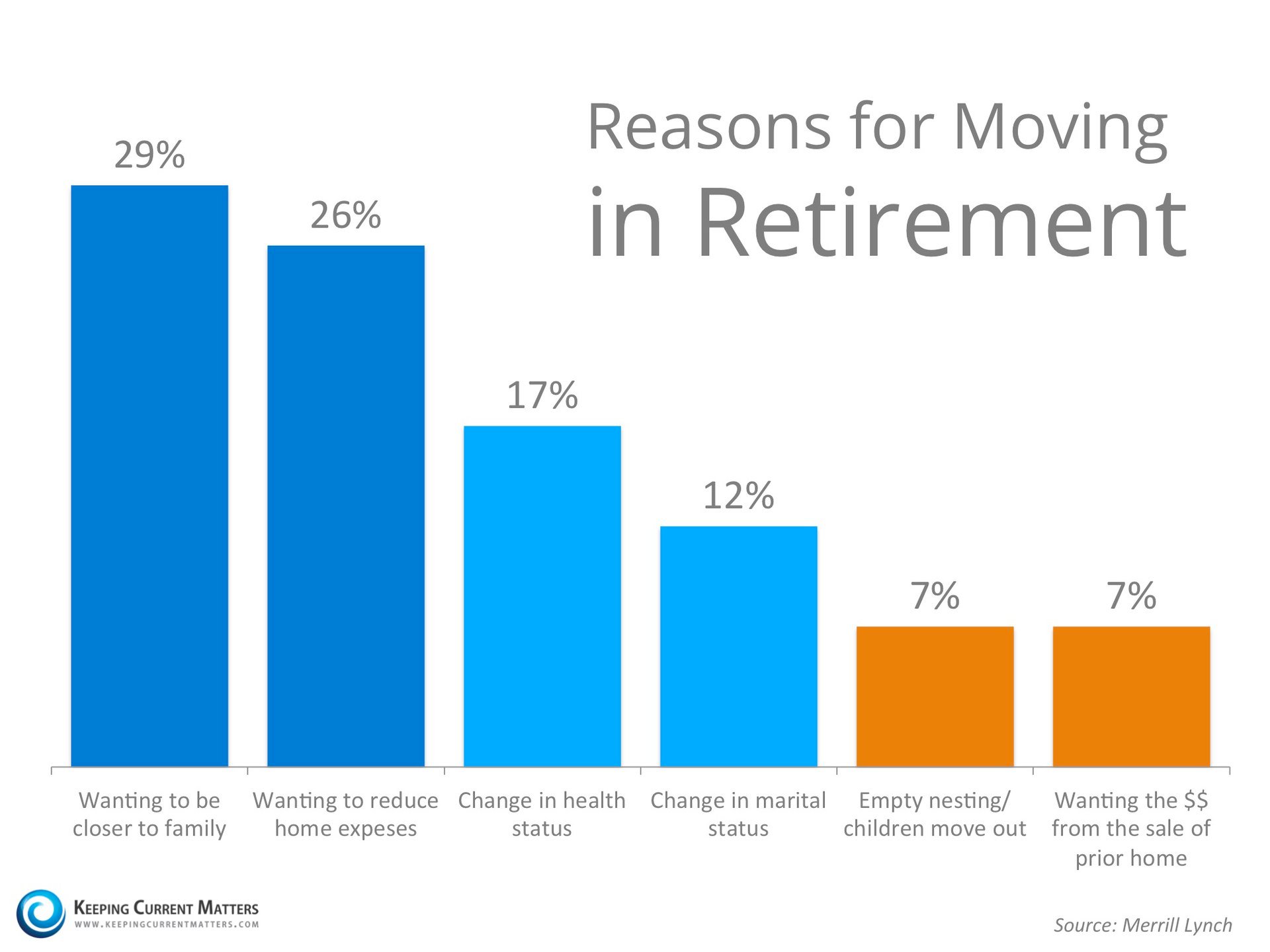Relocation for the Ages – The impact on employers of three generations in the workforce and an aging demographic will create new challenges and opportunities for the mobility industry.
By Maureen Campbell, CRP, SGMS, and Debbie Robinson, CRP, SRES
Tom, Fred, and Elizabeth Manchester are siblings who are active, engaged baby boomers. They have carved out their careers and are feeling fulfilled. Their children are beginning to leave the nest, and like so many of their contemporaries, the Manchesters are looking forward, with mixed emotions, to the freedom that will afford them. They’ve gracefully mastered the art of juggling work, home, and children, and now they are looking forward to traveling, relaxing, and taking up that hobby they’ve dreamed about.
The Manchesters grew up in the 1950s and ’60s in a middle-class American suburb. Their father worked for AT&T, and their mother was a homemaker. They moved a few times for their dad’s job, but always within the U.S. and with modest relocation benefits.
Fast-forward to 2015. Tom and his family have experienced several relocations, including an overseas assignment in Shanghai. His family received cultural training and experienced new customs, new languages, and a world that was far removed from friends and family. Fred moved his family seven times during his career, and each time, his spouse was faced with a new job search. As a dual-career family with three children, priorities were finding the right neighborhood, the right school/day care, and a job for Mom. Only Elizabeth, who stayed in California after attending college, remained in the same state throughout her career. Even so, it was not the state in which she grew up.
Tom now lives in New York, and he and his wife are relocating to North Carolina in the fall. Fred and his family settled permanently in New Jersey, where his children will soon be graduating from high school. Elizabeth remains in California.
This year, the family has a new relocation challenge. It is not job-related, nor is one of the siblings relocating. It is the family’s aging parents … and no one has any idea where to begin or where to find the appropriate resources.
Mom and Dad have been living in Florida since Dad retired at age 65 with a nice pension, savings, good health insurance, and a desire to live in a warm climate. Now, 20 years later, they are in their 80s, and Mom has chronic health issues. Dad has been her caretaker and has managed quite nicely. Suddenly, overnight, Dad became ill and is now hospitalized. He can no longer drive. In one quick moment, life is turned upside down—for everyone.
The siblings put together a plan: Tom will fly down first and spend a long weekend assessing their parents’ needs. Fred will take vacation time to drive down from New Jersey and visit assisted-living communities.
Everyone will look for communities in areas surrounding their homes. Elizabeth will fly out from California to make the final trip and investigate resources to dispose of excess furniture, ready the home for the market, and interview real estate agents. They will work together to give their parents the attention they need. They will do what they can to bring Mom and Dad close to one of their adult children.
This scenario is real. It is happening now, and we see it every day with multiple families in multiple locations all over the world. Sit at a table with 10 boomers, and it’s almost guaranteed that, if prompted, four of them can tell a personal story about caring for aging parents. And it is no less true for Gen-Xers.
The Challenges Ahead
Jody Gastfriend, vice president of senior care at Care. com, an organization that offers a suite of comprehensive care benefits for employers, says, “There has been a huge increase in the team’s care encounters over the past year. In fact, the inquiries have more than doubled.” Gastfriend attributes this increase to the fact that employers are coming to the realization that elder care is a rising issue.
“Employers are scheduling on-site seminars and investing in engaging and educating their workforce about this issue,” Gastfriend says. “Generally, it takes an impactful event to gain employer awareness—one that garners the attention of upper management.” For example, one of her clients, she says, was attempting to recruit for a senior management position. The top candidate would not accept unless his elderly mother, who lived in a retirement community five miles from him, was relocated along with the family.
“This is the tip of the iceberg,” says Gastfriend. “The workforce is aging, the country is aging, the world is aging. No one is prepared for the costs that will be incurred. Providing necessary resources to current and relocating employees is critical.”
The Aging Parent Crisis and Careers
If the issue of aging parents and their impact on careers is so pervasive, why do employers continue to say they have not heard there is a need?
While most people plan for child care, few lay the groundwork for aging parents and the care they will require. Being a primary caregiver to any loved one, young or old, irrefutably affects an employee’s career.
According to Gastfriend, employees don’t want to raise this issue. “When you have a child, you prepare for it. You plan for day care. You save for college.
You envision their futures. You share their accomplishments with your co-workers and employers. You would never not plan your children’s future, but people don’t want to think about their parents aging. Then they are shocked when, suddenly, their lives are turned upside down by it.”
Employers who are beginning to offer resources are ahead of the curve. They’re looking at their competition and thinking about how they can differentiate themselves. Asked why this issue is not more visible to employers, Gastfriend says, “Employees who are living with this have a fear of being discriminated against. It’s such a ubiquitous issue. Over 60 percent of the workforce is in this position. They are ‘sandwiched,’ but they are suffering in silence. They like their jobs and want to keep them. They need more flexibility but are reluctant to speak up.”
Gastfriend also believes this is a generational issue and that the silence will end when the torch is passed to the millennials. In addition, because members of the C Suite are now older, it seems likely that executives and managers will be encountering elder care issues themselves. As this happens, attention to this issue may grow. Elder care will be to the 21st century what child care was to the last few decades.
Yet, as we have polled fellow Worldwide ERC® members to see whether this issue needs attention in our mobility industry, the most common answer is, “We have not seen the need to address this issue” or “It doesn’t come up.”
Data indicates that working caregivers are turning down advancement opportunities and relocations, but they are not sharing their reasons. Attempting to stay under the radar, fearing that their caregiving issues will disenfranchise them or put them in a compromising position, they remain silent. Elder care concerns are not predictable. A healthy aging parent can take a fall one day and literally set off an environment of chaos. Some employees don’t even recognize themselves as having the role of caregiver. Adult children who have moved for their careers will be forced to enlist resources from a long distance, travel frequently when emergencies arise, and suffer the distractions of sorting through the myriad of complicated options available—none of which is easy and none of which they planned for. They may be managing everything long-distance, but the stress and distractions are real and, ultimately, will have an impact on work performance. While boomers have remained stoic and silent about their elder care issues, this is expected to change as future generations face these issues.
The Hard, Cold Facts
There will be 56 million senior Americans (65 and older) by 2020. Many boomers and Gen Xers will spend more time caring for their aging parents than they did raising their children. America leads the world in the number of centenarians. The number of adult children caring for one or both parents has tri- pled in the past 15 years. Economic hard times have pushed the average retirement age from 57 in the 1990s to 61 and rising. Boomers are working longer, and three generations are now in the workforce.
Because baby boomers grew up in large families, their aging parents have 50 percent more informal caregivers available than do the parents of Gen Xers or millennials. Forty-two percent of Gen Xers are now caring simultaneously for children and an aging parent, a higher proportion than boomers at 33 percent. In 14 years, the last of the boomers will turn 65, and by 2035 the first of the boomers will turn 85. Families are scattered all over the world, most because of relocations for career advancement. Divorce, delayed parenthood, blended families, dual-career couples, and other underlying forces have impacted the availability of informal caregivers. Employers are losing upward of $17 billion a year due to absenteeism.
Paired with increasing life expectancies, the demand for formal and informal caregivers will grow exponentially. There will be fewer siblings to share the burden and fewer formal caregivers, and the geographic separations will have a greater impact.
Many will be forced to relocate parents closer to adult children. Some will bring their parents into their homes. Others will move their parents to a retirement community nearby. Many caregivers will find themselves searching for jobs that are closer to their aging parents. All of these situations will require a specialized set of resources.
All of this will impact retention, recruitment, relocation, and employees’ career paths. We are currently at the tipping point where the challenges of caring for parents will affect the workforce more than caring for their children did.
What Resources Could or Should Employers Make Available?
- Be proactive. Don’t wait for employees to raise the issue. The issue is there. A visible program will enhance retention, recruiting, and relocation.
- Provide a list of resources—particularly for employees being relocated or relocating a parent.
- Offer flex time. Create a safe environment for employees to talk freely. Offer support groups.
- Offer seminars and gauge employee interest. “MIT did a whole series of on-site seminars,” says Gastfriend. “The response and feedback from employees was so overwhelmingly positive that they now have a care adviser, who is a master’s-level social worker, on-site for their employees.”
- Engage senior-care professionals to arrange meetings with employees and families. For siblings who are dispersed throughout the country, a virtual family meeting that includes all of the adult children can facilitate resolutions to serious issues.
- Offer guidance from industry experts on continuing care, independent, and assisted living communities. These are great options for parents with means.
Engage a Senior Relocation Service Provider
According to Kelly Sizemore, chief strategy officer at Zillner, an advertising agency that focuses on the senior consumer, most seniors say they are not ready to move yet. “It doesn’t matter that they are in their 80s and no longer managing the upkeep of their homes or are physically declining,” says Sizemore. “The relocation process is just too overwhelming and becomes paralyzing to both the senior and adult children. Five percent of this decision is logical; 95 percent is emotional. Typically, when seniors look at moving, they are handed a bunch of brochures and sent off to do the hard work. They need a program that will hold their hand, guide them, provide professional oversight, and make the phone calls.”
This is exactly what relocation professionals do every day for their corporate transferees. “This is stressful, emotional, and they see it as their ‘last’ move,” Sizemore adds. “They can’t do it on their own!”
We have witnessed firsthand the impact of a sudden crisis on families separated by geographic location. The family is almost always caught by surprise and unprepared. Children will visit Mom and Dad for the holidays and suddenly realize they are no longer functioning well. Discussions ensue: Should they move to a retirement community? Which type would be best? How do we know? How do we coordinate everything from so far away? Should they come live with one of us? Which one? Should we hire a caregiver?
Wake-up Call
In America, there is a stigma about aging. Nobody wants to talk about it, and nobody ever thought we’d be dealing with this situation. People retired at 65 and died in their 70s. With advances in health care, people are living into their 90s and 100s, but are dealing for years with chronic health issues.
Wouldn’t it be great if corporate America proactively reached out to individual employees who are doing what’s right for their parents? Shouldn’t we think more deeply about our need to look at elder care resources with the same attention we gave to day care and maternity/paternity leave? When we are relocating employees, shouldn’t we consider that this issue might be lurking behind the scenes and clouding the decision-making process? Shouldn’t we evaluate our employee assistance programs (EAPs) and our relocation benefits to look at each individual’s personal challenges?
Wouldn’t it be great if we started to change the way we viewed this subject, knowing full well that someday it’s going to happen to the CEO, the vice president, and the everyday worker? Not everyone has children, but most have parents. This issue will take its toll on each and every one of us at some point in our lives.
Maureen Campbell, CRP, SGMS, is senior vice president, director of operations, and Debbie Robinson, CRP, SRES, is executive vice president for Premier Transitions Senior Relocation Services. They can be reached at +1 901 257 2162.
www.WorldwideERC.org




